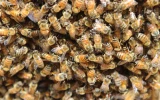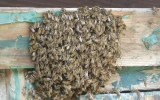3 Reasons Why Bees Swarm in the Spring & How To Avoid It
When you see a swarm of bees, don't run away. They're not mad, just looking for a new home. I'll share some tips to identifying spring swarms and how you can act ahead to prevent it.
Bees swarm in the spring because they experience a dramatic increase in population and food sources, the hive gets overcrowded, and the queen cannot produce enough pheromones to keep the colony together.
The good news about swarming in the spring is that the bees have plenty of time to build their food stores and increase in number before the winter hits. However, you may not want them to swarm and manage another hive just yet. I'll explain why colonies are likelier to swarm in the spring and what you can do to prevent it from happening.
Summary
- Colonies may swarm in the spring due to overcrowding, an abundance of food sources, and the queen's inability to produce enough pheromones to keep the entire hive together.
- Most of the strategies on preventing a swarm involve creating more space in the hive.
- Alternatively, you could also beat them to it and split the colony yourself if you feel that this is the better option.
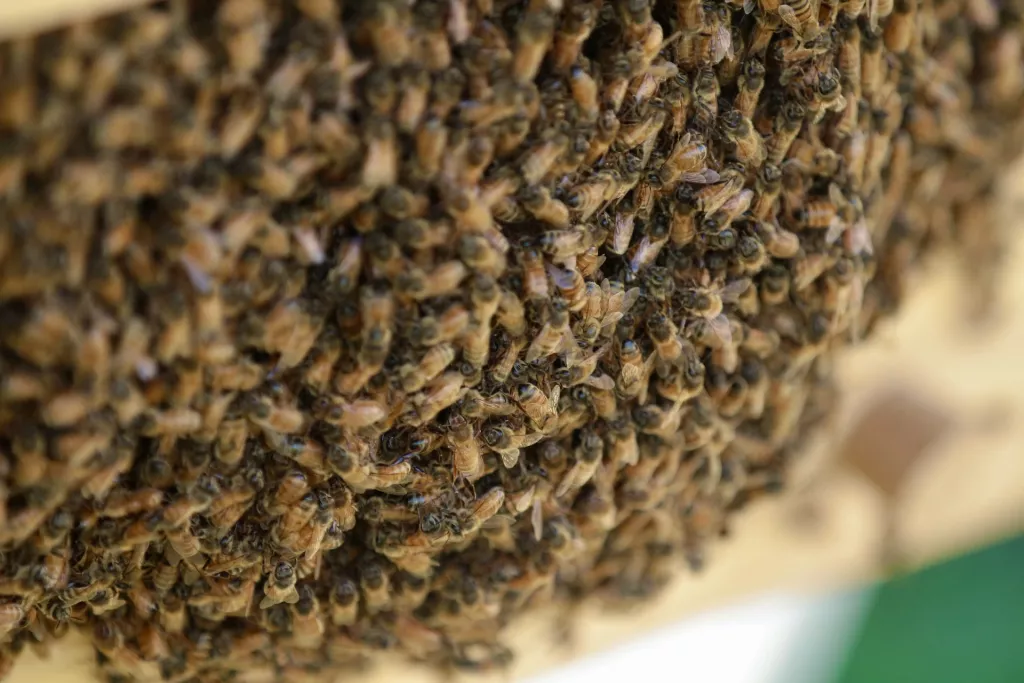
On this page:
3 Reasons Why Bees Swarm in the Spring
The queen does not produce enough queen pheromones
The responsibility of keeping an entire hive together rests exclusively on the shoulders of the queen bee. She releases a special pheromone around the clock that lets everyone in the hive know that she is still present, and there is no need to raise a new queen.
But in the spring, a hive goes through rapid expansion. At this point, there is a chance that the queen pheromone does not get evenly distributed to all the worker bees. This triggers the instinct to make a new queen and separate from the original colony.
The hive is overcrowded
After a long period of hibernation, the queen goes straight into laying thousands of eggs a day. She'll be taking up a lot of space for this task alone. This does not account for food storage, the space for brood, and the birth of new bees down the line.
With so much activity in the hive, some bees may eventually start scouting for more suitable places to settle down in. The desire to swarm is actually a sign that the colony is healthy and thriving.
Warm weather is a great time to reproduce
For bees, nothing signals a good time for work and expansion than great weather. The springtime is an exciting part of the year because so many flowers are in full bloom and they have just survived a harsh winter. With that in mind, the bees may find that the conditions are perfect for swarming.
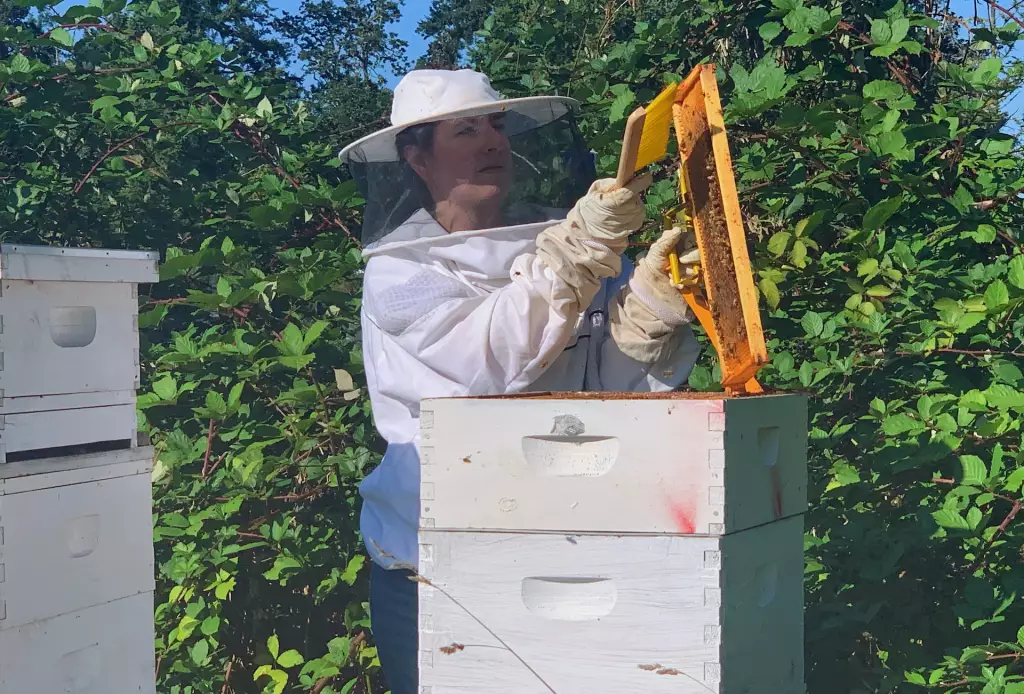
What You Can Do to Prevent Swarming
Keep a close eye on your hives
If you aren't ready to welcome a new colony yet, be thorough with your inspections and stock up on the equipment you need to act swiftly. This includes additional supers, brood frames, and harvesting tools. You could also invest in double-screened boards just in case you need to make any sudden splits.
Add new supers
Space out your inspections so the bees have enough time to build their hive without distractions. When you do decide to add another hive super, I recommend adding two at a time. This gives them plenty of space to continue working, especially if they have already drawn out their comb.
Distribute hive resources to weaker colonies
If you already have multiple hives set up, try re-allocating hive resources to your weaker colonies. You can transfer nurse bees, capped brood, and pollen from one hive to another. It's hitting two birds with one stone: you get to delay swarming while building up your other colonies.
Make sure all you hives are free of pests and diseases so you do not risk transferring them to a weaker colony.
Rotate some brood frames
Rotation refers to the replacement of a few brood frames with new and empty ones. This way, the bees can draw new comb and the queen can lay in fresher foundation. Brood frame rotation is also important for securing the strength and wellbeing of bees over generations.
Harvest the honey
Harvesting honey is a relatively simple and straightforward method to clearing up space for your bees. You can process it for personal consumption or try and make a profit. Make sure you leave enough for the bees.
Install a young queen
If you introduce a young queen to the colony before the height of the summer season, it may increase your chances of keeping the hive together for the next spring. Beekeepers have observed that queens emerging from their first winter seem to be less likely to swarm; but this is not a hard and fast rule. Colonies with older queens won't necessarily swarm. On the flip side of the coin, young nucs and packages have also been knnown to swarm.
This could be something you could try when you have more experience with beekeeping. Prioritize getting to know the bees' rigid schedule and observing the wellbeing of the queen.
Split the colony and beat them to it
Swarming is a natural part of a bees' life. However, it is possible for an experienced beekeeper to intervene if they feel that their help would better facilitate the process of creating two separate colonies. This process is called "splitting" the colony.
You can start preparing to split a hive once it has mated queens, or you notice enough drones in the area who can mate with the new queens. Any old hives that have been cleaned and sterilized will be perfect for the split.
What Won't Stop Bees From Swarming
Cutting out the queen cells
Your workers will simply prepare replacement cells for the queen laying in them once they realize they need new ones. It is also unlikely that you can find all the queen cells in the first place, because the bees often tuck away maturing queen cells in the crevices of their hive frames.
Placing a queen excluder inside the hive
When a colony is about to swarm, the queen prepares by losing weight so she can fly with her nestmates. As a result, she may be able to fit through a queen excluder.
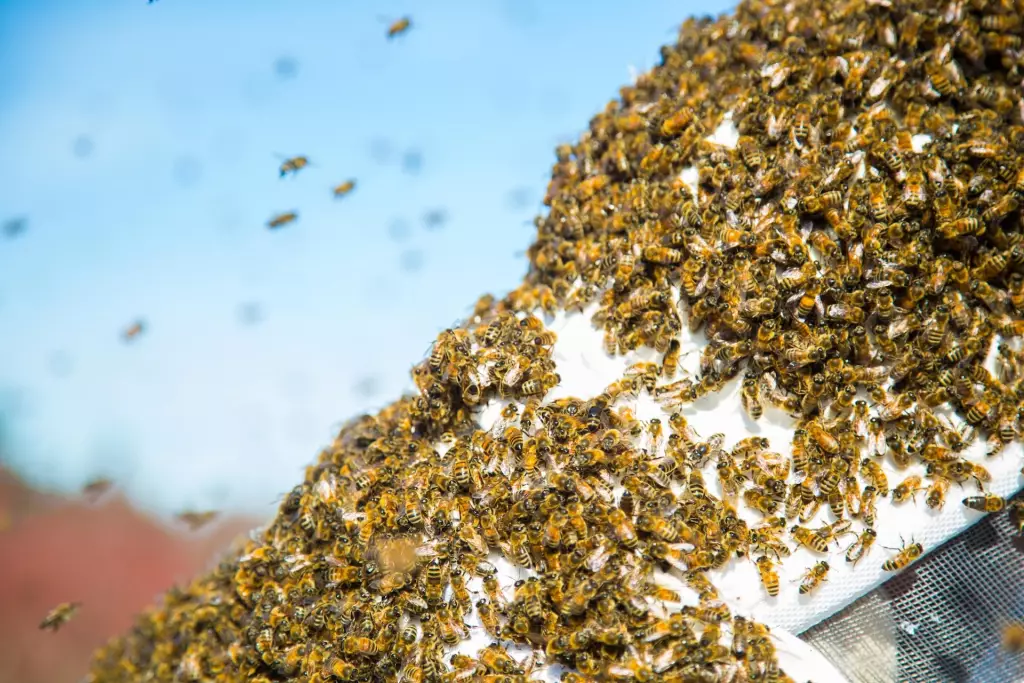
Why is There a Swarm Just Clustered Outside My Yard?
Swarming bees will fly around for a short period of time before settling on a branch, shrub, bush, or other inanimate object. They'll stay stationery anytime between an hour to a few days, depending on the weather and the time their scouting bees need to find a new nest site. The colony is huddled close together to keep the queen safe and cool.
If you have not intervened in the swarm and they find another object on their own, like a hollow tree trunk, then they will break up the cluster and start making their way there.
While this may be an imposing sight, swarming bees are usually docile. They stuff their stomachs with all the honey they can take before they swarm, which reduces their ability to sting. And since they don't have offspring or food stores nearby to defend, they are less likely to get provoked.
Are Bees the Only Insects That Swarm?
Plenty of insects swarm for their own reasons. They may be migrating to find new homes or warmer regions, defending themselves against a bigger predator, or reproducing with other colonies. It's a natural part of insect behavior, particularly flying insects, that is not exclusive to honeybees.

